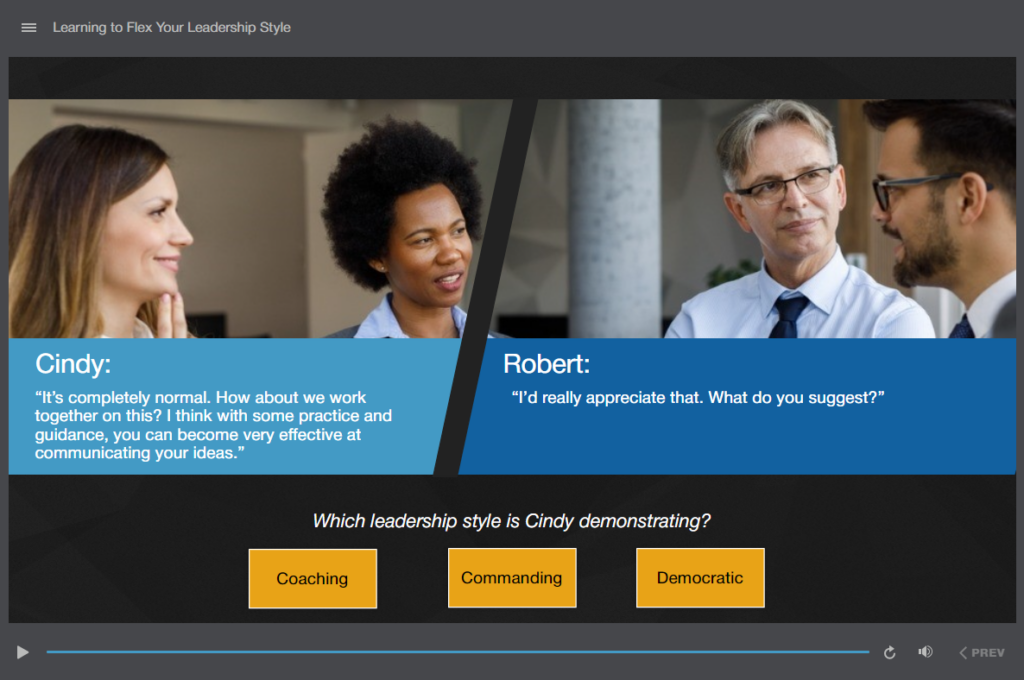Dust off your content and make it digital
Got stacks of valuable Instructor-Led Training (ILT) materials yearning for a digital makeover?
Converting instructor led training to elearning can help! We transform your existing materials into engaging, interactive online courses, breathing new life into your content and making it accessible anytime, anywhere. Don’t let your training gather dust—convert ILT to eLearning with ThinkingKap.

ThinkingKap’s approach
At ThinkingKap, we know that simply copying and pasting your ILT content into an online format just won’t cut it (seriously, who wants death by PowerPoint?). We’re all about transforming your existing materials into interactive, learner-centered eLearning experiences.
Analyze, strategize, and then we digitize
Our ILT to eLearning conversion process starts with a deep dive into your existing materials and learning objectives. We’ll work with you to understand your audience, identify any opportunities for improvement, and develop a winning strategy for your eLearning transformation.
More than just a pretty interface—it’s about engagement
We go beyond just making your content look good online. We incorporate a variety of interactive elements, multimedia components, and knowledge checks to create a dynamic learning experience that keeps learners engaged and reinforces key concepts.
Benefits of converting from Instructor Led to eLearning
Convert instructor-led to eLearning and unleash the full potential of your training content
Converting instructor-led training to eLearning offers a whole host of benefits, from increased flexibility and reach to cost savings and enhanced learner engagement.
Say goodbye to scheduling nightmares
Ditch the rigid schedules and geographic limitations of traditional training. eLearning allows your team to learn anytime, anywhere, at their own pace – because who doesn’t love a little flexibility?
Boost engagement (and banish boredom)
We believe learning shouldn’t feel like a chore. We’ll transform your existing materials into a dynamic, interactive experience that will have your learners saying, “More eLearning, please!” (Okay, maybe not in those exact words, but they’ll definitely be engaged).
ILT to eLearning course conversion in action

Drowning in dry, text-heavy training materials? ThinkingKap transformed a client’s dull Word and PowerPoint content into engaging eLearning experiences packed with real-world examples, interactive quizzes, and multimedia. This revitalized approach dramatically boosted learner motivation, knowledge retention, and real-world application. This case study demonstrates the power of interactive learning design.
Example of an instructor-led training to eLearning course
Beyond the conversion: diverse eLearning solutions
ThinkingKap excels at tailoring learning experiences for the digital environment. We offer a range of ILT to eLearning conversion services, ensuring your training translates seamlessly to the digital space while maintaining its interactivity and effectiveness.
Engaging virtual classrooms
While asynchronous eLearning is often ideal, some training benefits from a live, interactive element. In those cases, we expertly guide the transition from ILT to virtual instructor-led training (vILT). Our approach to vILT design overcomes the challenges of a virtual environment to deliver engaging, impactful sessions that rival the energy and connection of in-person training.
Real-world skills, reimagined for eLearning
We understand that some of the most valuable training experiences involve hands-on activities and real-world simulations. Our team creatively translates these elements into interactive, screen-based eLearning experiences. Through thoughtful instructional design, we ensure that even complex, real-world tasks remain engaging and impactful when converted from ILT to eLearning.
Why ThinkingKap?
Experts in converting your corporate training programs
Sure, anyone can try to convert your training materials. But our seasoned team of eLearning gurus at ThinkingKap eats, sleeps, and breathes this stuff.

Transforming training, one course at a time
We blend contemporary technology with instructional design expertise to create eLearning experiences that are not only engaging and effective but also strategically aligned with your business goals. We’re basically the superstars of corporate training transformation.
Your trusted partner in eLearning success
From needs analysis to content development and implementation, we’re your one-stop shop for all things ILT to eLearning conversion. We’ll guide you through the entire process, ensuring a smooth transition and exceptional results.
Curious to learn more? Read about ThinkingKap and our mission to fight boring training courses.
Don’t let your training gather dust – convert ILT to eLearning with ThinkingKap to realize the full potential of your content.
FAQs
We love answering questions about ILT to eLearning course conversion!

Okay, you’ve convinced me! How do we get started?
Click that magic button below, and let’s chat! We’ll answer all your questions, provide a personalized quote, and guide you through the exciting journey of bringing your ILT materials back to life in an engaging eLearning experience.

Talk to an expert
Transform your instructor-led courses today!
Don’t let your valuable training materials continue to collect dust! Let ThinkingKap transform them into engaging, accessible eLearning experiences that deliver real results. We’re happy to answer your questions – give us a call us at 1 (800) 38-THINK or use the form to get started.
